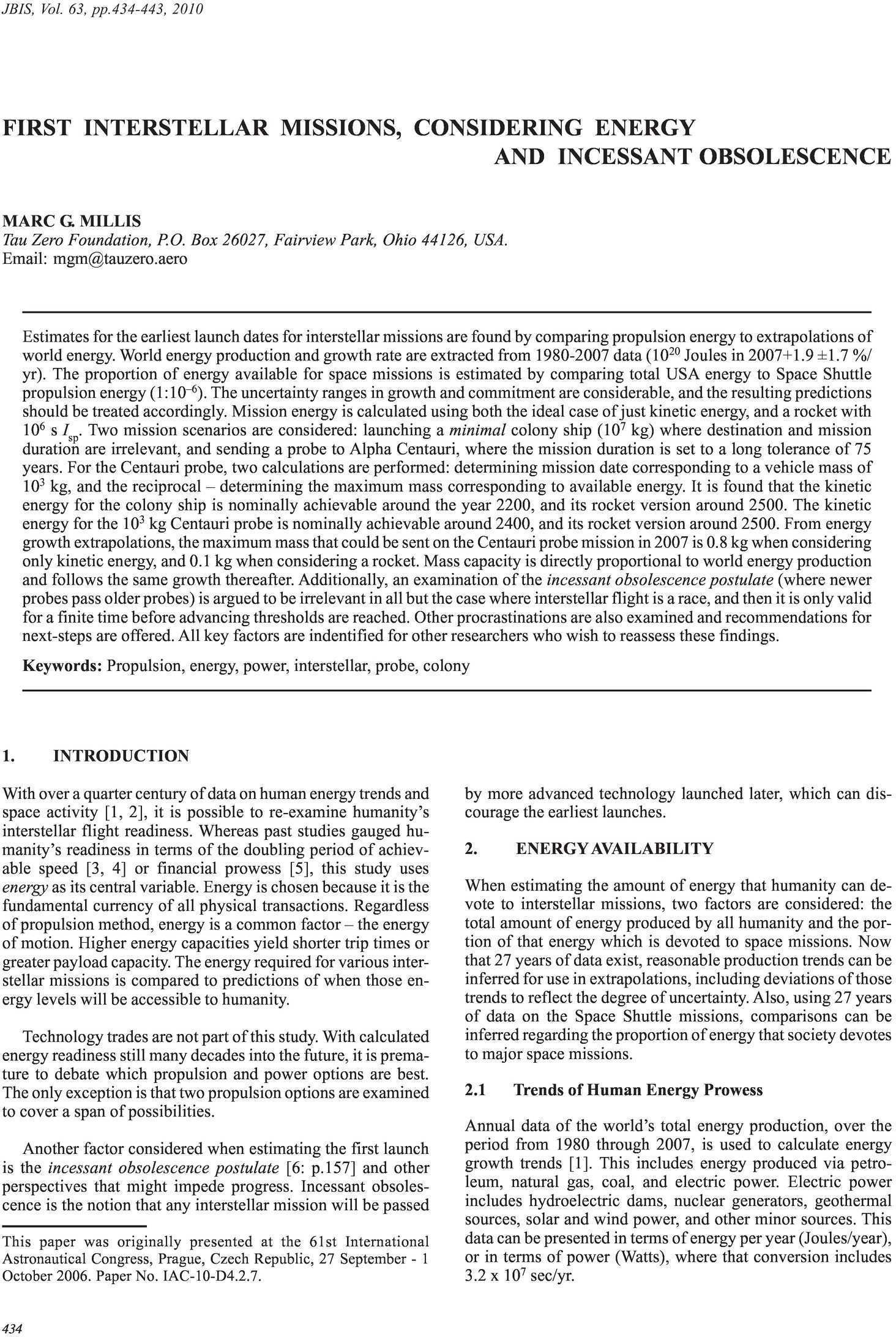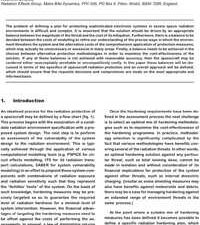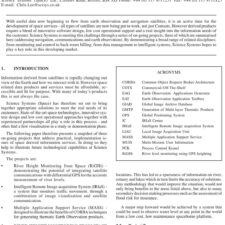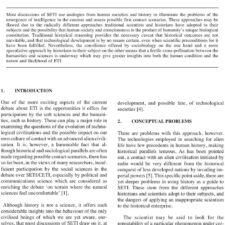First Interstellar Missions, Considering Energy and Incessant Obsolescence
£5.00
M. G. Millis (2010), JBIS, 63, pp.434-443
Refcode: 2010.63.434
Keywords: Propulsion, energy, power, interstellar, probe, colony
Abstract:
Estimates for the earliest launch dates for interstellar missions are found by comparing propulsion energy to extrapolations of world energy. World energy production and growth rate are extracted from 1980-2007 data (1020 Joules in 2007+1.9 ±1.7 %/ yr). The proportion of energy available for space missions is estimated by comparing total USA energy to Space Shuttle propulsion energy (1:10-6). The uncertainty ranges in growth and commitment are considerable, and the resulting predictions should be treated accordingly. Mission energy is calculated using both the ideal case of just kinetic energy, and a rocket with 106 s Isp. Two mission scenarios are considered: launching a minimal colony ship (107 kg) where destination and mission duration are irrelevant, and sending a probe to Alpha Centauri, where the mission duration is set to a long tolerance of 75 years. For the Centauri probe, two calculations are performed: determining mission date corresponding to a vehicle mass of 103 kg, and the reciprocal – determining the maximum mass corresponding to available energy. It is found that the kinetic energy for the colony ship is nominally achievable around the year 2200, and its rocket version around 2500. The kinetic energy for the 103 kg Centauri probe is nominally achievable around 2400, and its rocket version around 2500. From energy growth extrapolations, the maximum mass that could be sent on the Centauri probe mission in 2007 is 0.8 kg when considering only kinetic energy, and 0.1 kg when considering a rocket. Mass capacity is directly proportional to world energy production and follows the same growth thereafter. Additionally, an examination of the incessant obsolescence postulate (where newer probes pass older probes) is argued to be irrelevant in all but the case where interstellar flight is a race, and then it is only valid for a finite time before advancing thresholds are reached. Other procrastinations are also examined and recommendations for next-steps are offered. All key factors are indentified for other researchers who wish to reassess these findings.





